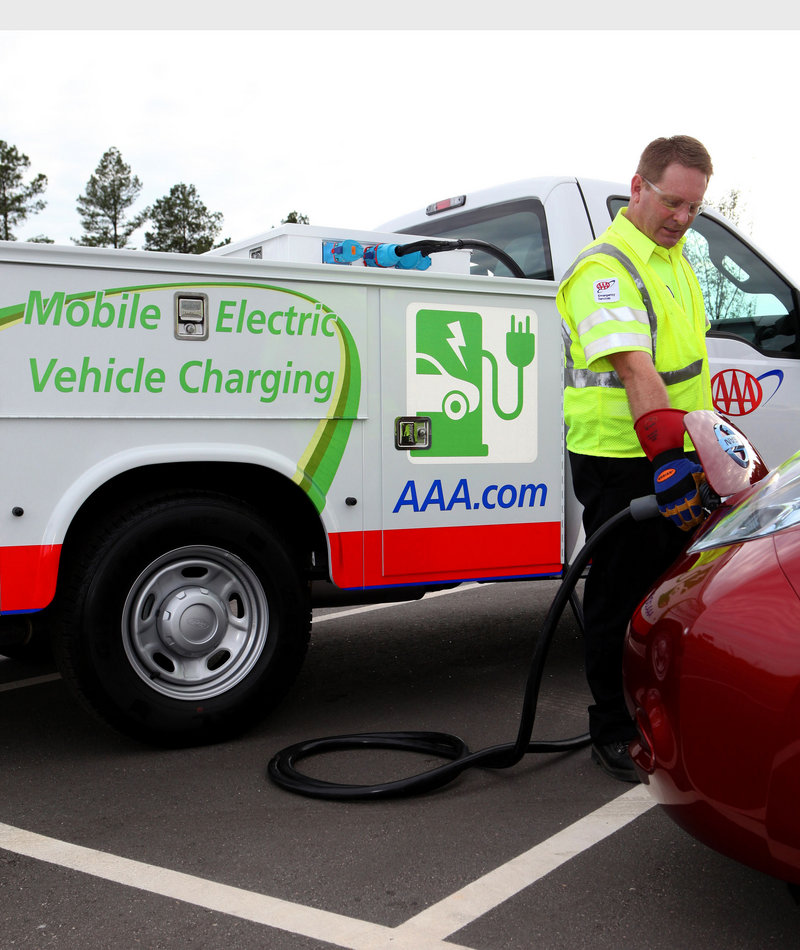– By DANA HULL
San Jose Mercury News
SAN JOSE, Calif. – Electric cars are a game-changing technology with an Achilles’ heel — the battery.
Current batteries are expensive and have limited range, making it hard to drive significant distances without stopping to recharge. Experts agree consumers will never fully embrace electric vehicles until they can travel as far as a gas-powered car on a single charge.
So the global race is on to build a better lithium-ion battery, one that pulls off the herculean feat of extending range while being long-lasting, affordable, quick-charging and safe.
In Asia, governments and big battery companies are investing heavily in next-generation battery technology, while in the United States much of the cutting-edge research is being performed at Department of Energy labs and universities. The San Francisco Bay Area – home to Palo Alto, Calif.-based Tesla Motors, Lawrence Berkeley National Laboratory and two dozen battery startups — has emerged as one of the nation’s leading hubs of battery innovation.
“Transportation is going to go electric, and batteries have become a real critical technology,” said Steve Visco, chief technology officer of PolyPlus, a startup that was spun out of the Berkeley lab. “The Chinese government is subsidizing a lot of battery research, and in Japan the companies have 10-, 20- and 30-year technology road maps.”
The stakes are enormous. President Barack Obama wants to see 1 million electric vehicles on America’s highways by 2015, but many say that goal will be hard to reach until range improves.
“The perception of range anxiety is a real challenge for us,” Renault-Nissan CEO Carlos Ghosn, whose company makes the all-electric Nissan Leaf, said during a visit to Stanford University last month. “People are anxious because it is a double dip – the range is limited, and then if I am stuck, where can I charge?”
Batteries are complex systems that convert stored chemical energy into electricity. Researchers say advances often involve trade-offs: Improving range may result in skyrocketing costs, or a shorter battery life.
“It is a very humbling experience to work on batteries,” said Venkat Srinivasan, a scientist who leads the highly regarded Batteries for Advanced Transportation Technologies team at the Berkeley lab. “To make a good battery is incredibly hard, and to mass-produce it is even harder. If you shoot for one improvement, you usually lose out on something else, and you can’t compromise on safety. If we could double the energy density, that would be a huge breakthrough.”
Measured as kilowatt hours per kilogram or liter, “energy density” determines range: The more watt hours you have, the more miles the car can travel on a single charge. Low-cost, high-energy density batteries are the holy grail.
“If you could go 300 miles on a charge, you’d see significant growth in electric vehicles,” said Michael Omotoso, an auto analyst with J.D. Power and Associates. “We think battery costs will come down due to volume manufacturing, but we don’t see energy density going up that much.”
The Tesla Roadster, Nissan Leaf and Chevrolet Volt all use some form of lithium-ion chemistry in their batteries. First commercialized by Sony in 1991, lithium-ion batteries are widely used in consumer electronics such as laptops and cellphones but are relatively new in cars.
The basic guts of a battery include a negatively charged anode, a positively charged cathode and the electrolyte. When a battery is fully charged, the lithium ions are concentrated in the anode. As the battery discharges, the ions flow to the cathode and current flows through the electric circuit, releasing energy.
The most commercially popular anode material is graphite; cathodes are usually made of a lithium compound, such as lithium iron phosphate. Many startups are experimenting with battery chemistry and using various materials for the anode or cathode or both.
While there’s talk in the industry of moving “beyond lithium” and using new materials, many expect lithium-ion batteries to remain dominant in the coming decades.
“Everyone is moving rapidly up the technology curve,” said Jim Dunlay, Tesla’s vice president for powertrain hardware engineering. “Lithium-ion is still on a strong trajectory; it hasn’t peaked. We are using better cells, and we’ve learned how to package them more densely together. But it’s not just about building a better battery. A better battery means we have a better car.”
The Obama administration has poured $2.4 billion into electric-vehicle batteries and charging infrastructure in hopes of improving energy density, bringing down costs and creating jobs. Tesla, Nissan and Fisker Automotive have been awarded loans to establish manufacturing facilities, and several other companies were awarded federal ARPA-E grants, which support high-risk, high-reward energy research. PolyPlus received a $5 million ARPA-E grant for its work.
“Some of the best minds in the country are now working in this area,” said David Sandalow, the Department of Energy’s assistant secretary for policy and international affairs.
Copy the Story LinkSend questions/comments to the editors.



Success. Please wait for the page to reload. If the page does not reload within 5 seconds, please refresh the page.
Enter your email and password to access comments.
Hi, to comment on stories you must . This profile is in addition to your subscription and website login.
Already have a commenting profile? .
Invalid username/password.
Please check your email to confirm and complete your registration.
Only subscribers are eligible to post comments. Please subscribe or login first for digital access. Here’s why.
Use the form below to reset your password. When you've submitted your account email, we will send an email with a reset code.